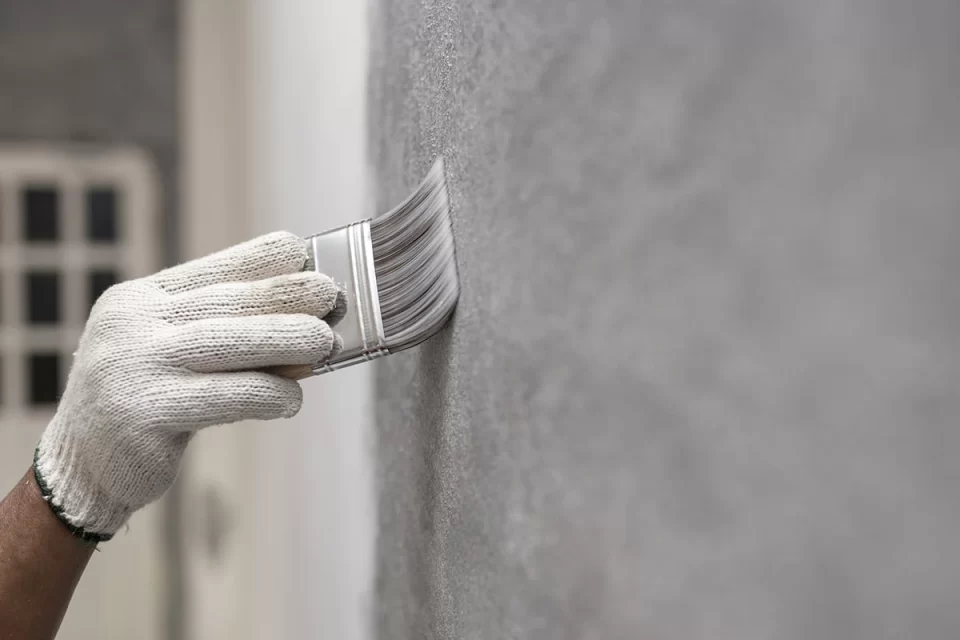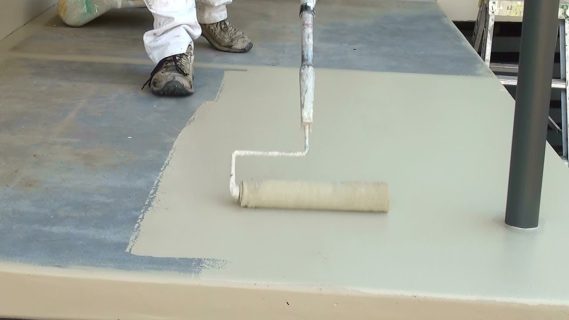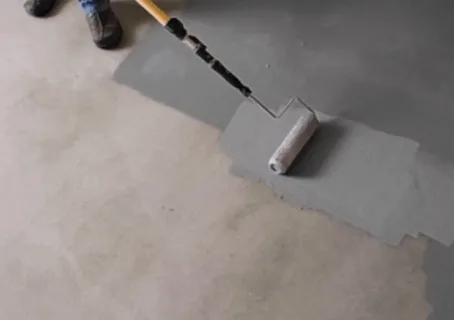Apart from water, concrete is known as the most important material to be used on earth for construction. Its gray appearance and structure have led us to the use of stain and paint to bring color and visual sense to this ever-consumed material. But these statements bring the question to our mind, what is the major difference between concrete staining and painting?
To bring clarity over this question, let’s dig into the differences between concrete staining and painting, and how each of them can play a role in your concrete construction project.
Enhancing Depth and Character
Concrete staining is a transformative process that involves the application of a specialized chemical solution to concrete surfaces. This method creates a permanent coloration by reacting with the minerals present in the concrete, resulting in a striking appearance that enhances depth and character.
Unlike concrete staining, which integrates with the concrete itself, painting involves applying a coating of paint onto the surface. This coating forms a protective layer that covers the concrete, providing a uniform coloration and surface finish.
Permanent Coloration:
Concrete staining differs from traditional painting methods in that it doesn’t simply coat the surface; rather, it becomes an integral part of the concrete itself. This permanence ensures that the coloration won’t fade or chip over time, providing long-lasting beauty to your surfaces.

Concrete painting involves applying a layer of paint onto the surface, forming a coating that sits atop the concrete. This coating provides color and protection but doesn’t integrate with the concrete itself. Unlike staining, where the color becomes part of the concrete, painted surfaces may require touch-ups over time as the paint may fade or chip. While painting offers versatility in color options, it doesn’t offer the same permanence as staining, making it important to consider long-term maintenance needs.
Variegated Appearance:
The unique chemical reaction between the staining solution and the concrete minerals produces a variegated effect that mimics the natural look of stone. This organic aesthetic adds visual interest and texture to your surfaces, creating a one-of-a-kind finish.
Unlike concrete staining, where the chemical reaction creates a varied look, concrete painting gives a uniform color. This means the surface looks the same throughout. While it lacks the natural charm of stained concrete, painting lets you pick the exact shade you want. So, whether you fancy a modern vibe or something more classic, painting gives you the flexibility to match your style.
Mimicking Natural Stone:
One of the standout features of concrete staining is its ability to mimic the appearance of natural stone. Whether you desire the elegance of marble or the warmth of sandstone, stains can be customized to achieve the desired look, giving your surfaces a high-end, sophisticated appeal.

Concrete painting provides versatility in creating different looks beyond mimicking natural stone. Unlike staining, which focuses on replicating stone patterns, painting allows for a wide range of aesthetic options. You can choose from bold designs, subtle gradients, or even custom artwork, giving you the freedom to personalize your concrete surfaces to match your style preferences, whether you prefer a modern, minimalist, or unique look.
Wide Range of Colors:
Concrete stains are available in a diverse range of colors, allowing for extensive customization to suit your specific style preferences. From subtle earth tones to vibrant hues, there’s a stain color to complement any design scheme, enabling you to achieve the perfect aesthetic for your space.
Concrete painting offers precise color matching and consistency, resulting in a uniform appearance across the entire surface. This allows for greater control over the final aesthetic, making it easier to achieve specific color schemes and design preferences.
Durability and Longevity:
Stained concrete surfaces are highly durable and resistant to wear and tear. Since the stain penetrates deep into the concrete rather than forming a superficial layer, it is less prone to chipping, peeling, or fading over time. This makes stained concrete an ideal choice for high-traffic areas such as driveways, patios, and walkways.
Proper surface preparation is crucial for ensuring the longevity and durability of painted concrete surfaces. This includes a thorough cleaning to remove any dirt or oil. Additionally, repairing any cracks or imperfections and applying a suitable primer can help promote proper bonding between the paint and the concrete substrate.
When applying the paint, following manufacturer recommendations regarding application techniques and environmental conditions is essential for achieving optimal results. Regular maintenance, such as periodic cleaning with a mild detergent and water, along with prompt touch-ups to address any signs of wear or damage, can help preserve the appearance of painted concrete surfaces over time.

Low Maintenance:
Maintaining stained concrete surfaces is relatively easy and requires minimal upkeep. Regular cleaning with a mild detergent and water is usually sufficient to keep the surfaces looking their best, making stained concrete a practical and cost-effective option for homeowners and businesses alike.
Maintaining painted concrete surfaces is relatively straightforward and typically involves regular cleaning with mild detergent and water. Additionally, touch-up painting can be done as needed to address any areas of wear or damage, ensuring that the surfaces remain looking their best.
Choosing the Right Option for Your Project
When deciding between concrete staining and concrete painting, several factors should be taken into consideration. These include the desired aesthetic, the condition of the existing concrete, and the level of maintenance you are willing to undertake.
If you desire a natural, nuanced appearance that enhances the texture of the concrete, staining may be the ideal choice. Conversely, if you prefer a more uniform coloration with a broader range of customization options, painting might better suit your needs.
Conclusion:
While concrete painting and staining both offer ways to enhance the appearance of concrete surfaces, Concrete differs in their application methods, Costs aesthetic outcomes, and durability. Concrete painting provides a uniform coloration and surface finish, along with added protection against the elements, making it a versatile option for a wide range of indoor and outdoor applications. Understanding the differences between concrete staining and painting can help you choose the best option to suit your specific needs and design preferences.

